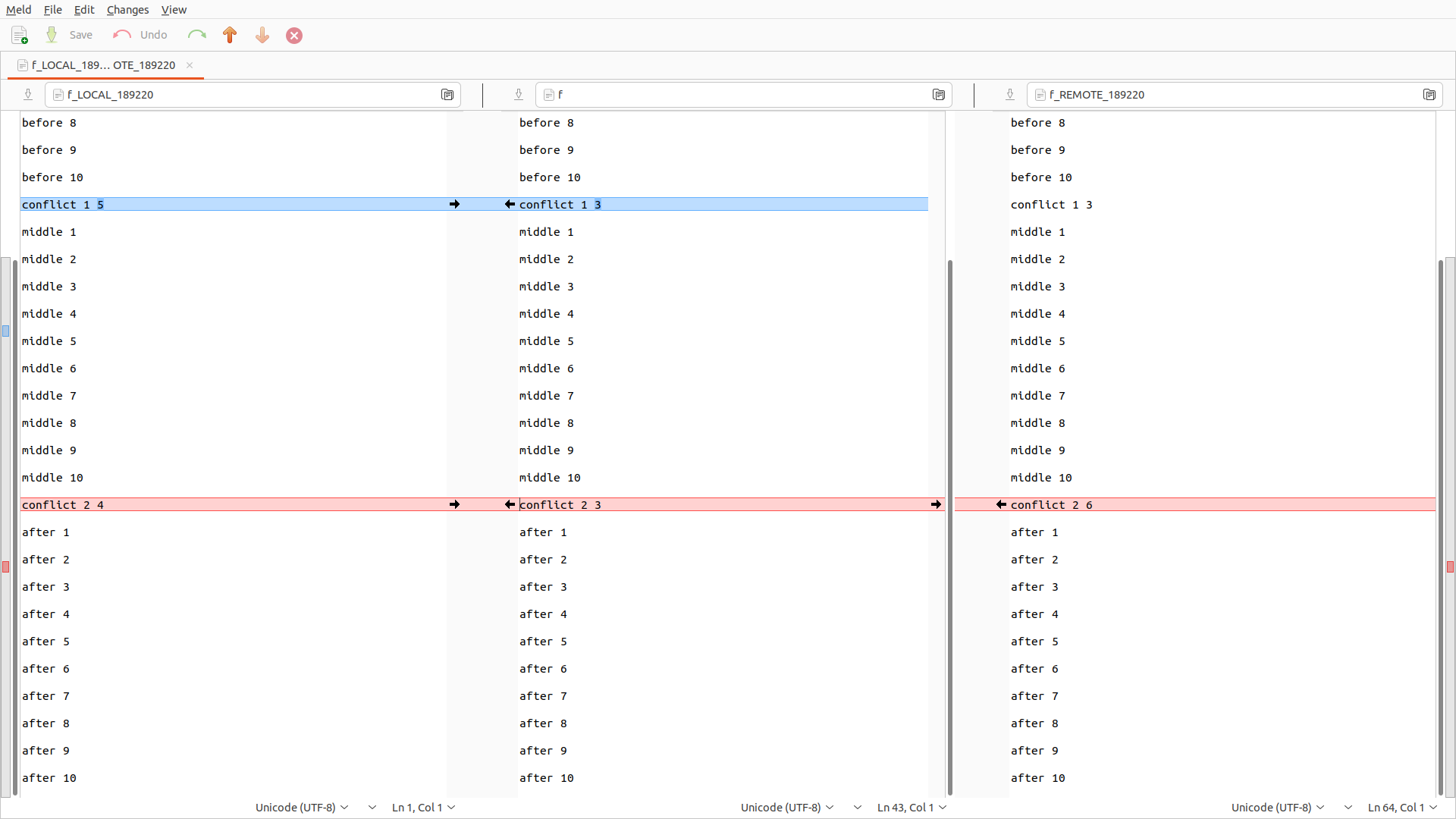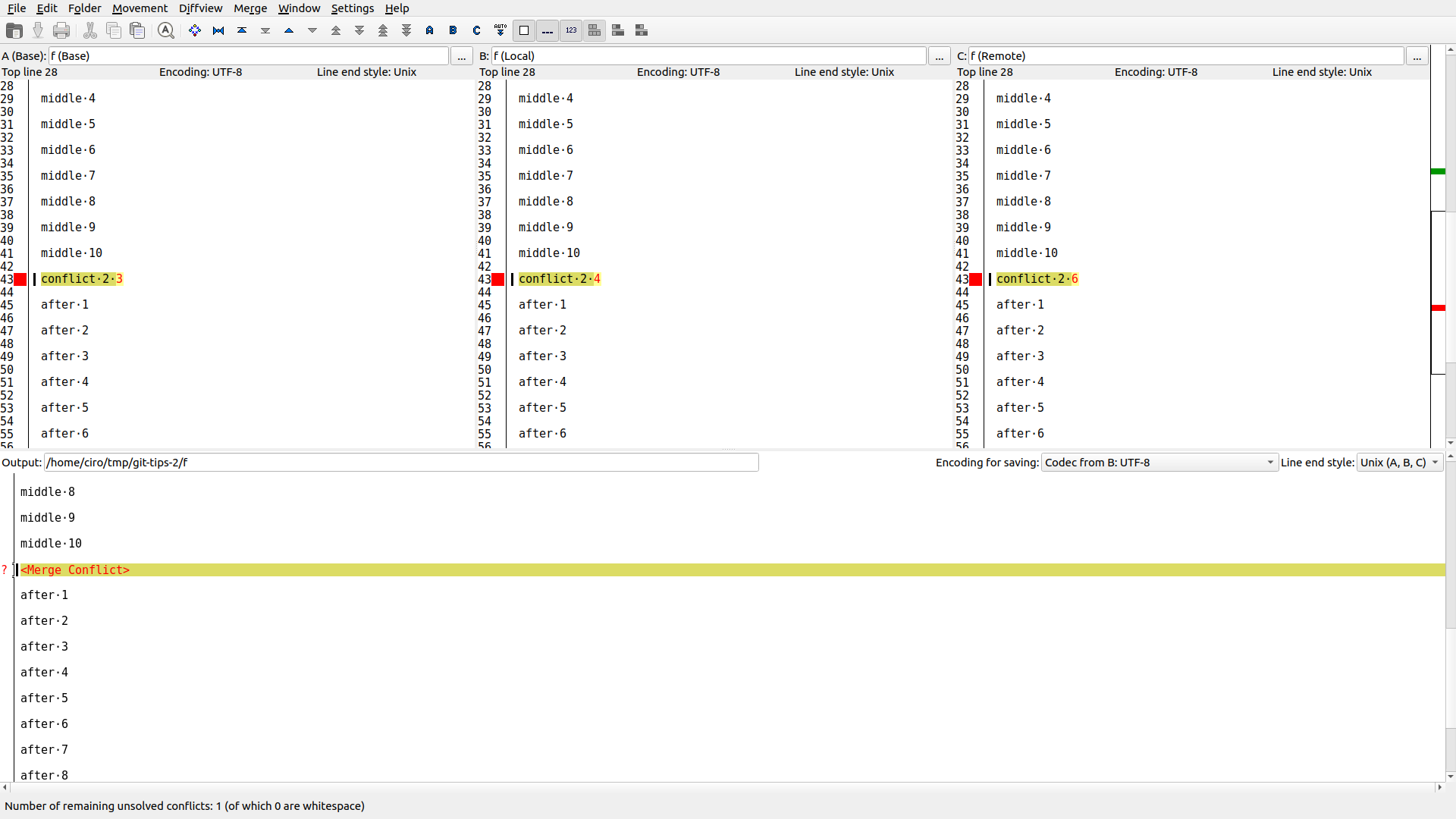At twitter.com/togelius/status/1328404390114435072 called out on DeepMind Lab2D for not giving them credit on prior work!As seen from web.archive.org/web/20220331022932/http://gvgai.net/ though, DeepMind sponsored them at some point.
This very much looks like like GVGAI which was first released in 2014, been used in dozens (maybe hundreds) of papers, and for which one of the original developers was Tom Schaul at DeepMind...
- SQLite with
rowid: stackoverflow.com/questions/8190541/deleting-duplicate-rows-from-sqlite-database - SQL Server has crazy "CTEs" change backing table extension: stackoverflow.com/questions/18390574/how-to-delete-duplicate-rows-in-sql-server
Principal investigator: Simon M. Lucas.
diff3 conflict is basically what you always want to see, either by setting it as the default as per stackoverflow.com/questions/27417656/should-diff3-be-default-conflictstyle-on-git:git config --global merge.conflictstyle diff3git checkout --conflict=diff3With this, conflicts now show up as:
++<<<<<<< HEAD
+5
++||||||| parent of 7b0f59d (6)
++3
++=======
+ 6
++>>>>>>> 7b0f59d (6)7b0f59d is the SHA-2 of commit 6.instead of the inferior default:
++<<<<<<< ours
+5
++=======
+ 6
++>>>>>>> theirsWe can also observe the current tree state during resolution:so we understand that we are now at 5 and that we are trying to apply our commit
* b4ec057 (HEAD, master) 5
* 0b37c1b 4
| * fbfbfe8 (my-feature) 7
| * 7b0f59d 6
|/
* 661cfab 3
* 6d748a9 2
* c5f8a2c 16So it is much clearer what is happening:and so now we have to decide what the new code is that will put both of these together.
We now reach:and the tree looks like:So we understand that:
++<<<<<<< HEAD
+11
++||||||| parent of fbfbfe8 (7)
++6
++=======
+ 7
++>>>>>>> fbfbfe8 (7)* ca7f7ff (HEAD) 6
* b4ec057 (master) 5
* 0b37c1b 4
| * fbfbfe8 (my-feature) 7
| * 7b0f59d 6
|/
* 661cfab 3
* 6d748a9 2
* c5f8a2c 1and after resolving that one we now reach:
* e1aaf20 (HEAD -> my-feature) 7
* ca7f7ff 6
* b4ec057 (master) 5
* 0b37c1b 4
* 661cfab 3
* 6d748a9 2
* c5f8a2c 1These are good free newbie GUI options:
sudo apt install meld
git mergetool --tool meld
sudo apt install kdiff3
git mergetool --tool kdiff3git-tips-2.sh
#!/usr/bin/env bash
set -eux
add() (
rm -f f
for i in `seq 10`; do
printf "before $i\n\n" >> f
done
printf "conflict 1 $1\n\n" >> f
for i in `seq 10`; do
printf "middle $i\n\n" >> f
done
printf "conflict 2 $2\n\n" >> f
for i in `seq 10`; do
printf "after $i\n\n" >> f
done
git add f
)
rm -rf git-tips-2
mkdir git-tips-2
cd git-tips-2
git init
for i in 1 2 3; do
add $i $i
git commit -m $i
done
add 3 4
git commit -m 4
add 5 4
git commit -m 5
git checkout HEAD~2
git checkout -b my-feature
add 3 6
git commit -m 6
add 7 6
git commit -m 7 Git tips But which commit from master did we conflict with exactly? by  Ciro Santilli 37 Updated 2025-07-16
Ciro Santilli 37 Updated 2025-07-16
git rebase does not tell you that, and that sucks.We only know which commit from the feature branch caused the problem.
Generally we can guess or it is not needed, but
imerge does look promising: stackoverflow.com/questions/18162930/how-can-i-find-out-which-git-commits-cause-conflictsBefore:
5 master
|
4 7 my-feature HEAD
| |
3 6
|/
2
|
1Action:
git rebaseAfter:Ready to push with linear history!
7 my-feature HEAD
|
6
|
5 master
|
4
|
3
|
2
|
1Before:
7 my-feature HEAD
|
6
|
5 master
|
4
|
3
|
2
|
1Oh, commit 6 was crap:
git rebase -i HEAD~2Mark
6 to be modified.After:Better now, ready to push.
7 my-feature HEAD
|
6v2
|
5 master
|
4
|
3
|
2
|
1www.biorxiv.org/content/10.1101/2022.09.19.508583v1.fullIt is also interesting to see how they are interested in co-culture with HeLa cells, presumably to enable infectious bacterial disease studies.
CVI-syn3B strains differ from JCVI-syn3.0 by the presence of 19 additional non-essential genes that result in a more easily manipulated cell. JCVI-syn3B additionally includes a dual loxP landing pad that enables easy Cre recombinase mediated insertion of genes
At biology.indiana.edu/news-events/news/2023/lennon-minimal-cells.html (2023) they let it re-evove to it it would regain some fitness, and it did.
Hello world adapted from: github.com/liabru/matter-js/wiki/Getting-started/1d138998f05766dc4de0e44ae2e35d03121bb7f2
Also asked at: stackoverflow.com/questions/28079138/how-to-make-minimal-example-of-matter-js-work/76203103#76203103
Renderer questions:
- follow object on viewport: codepen.io/csims314/pen/goZQvG
- draw text: github.com/liabru/matter-js/issues/321
A multi-scenario demo.
There are unlisted articles, also show them or only show them.


